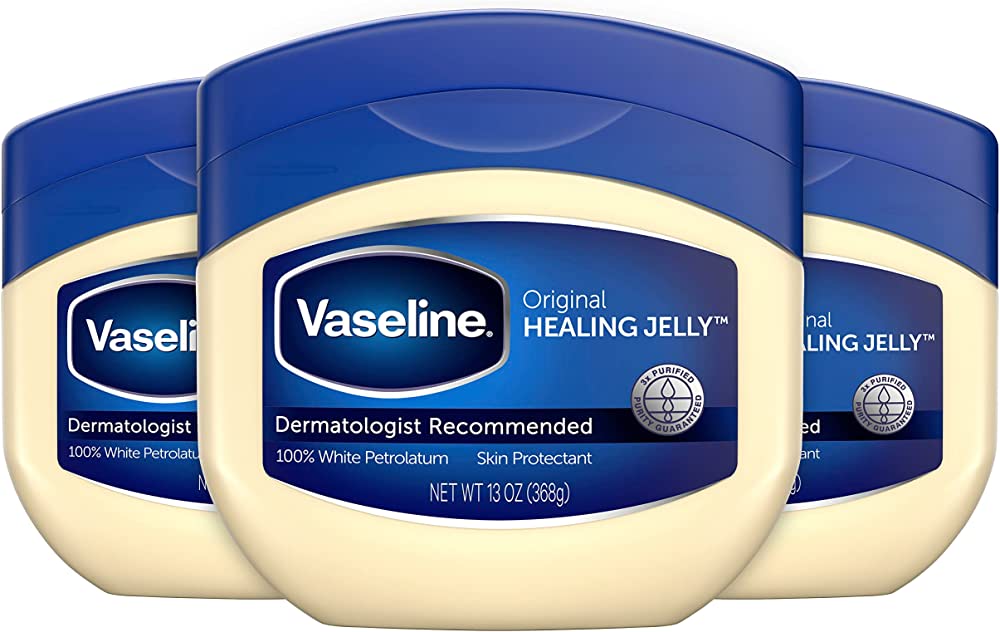Navigating the Maze: Decoding the Differences and Ensuring Purity
In the realm of skincare and household products, Vaseline and Petroleum Jelly stand as stalwarts, each claiming its own niche. However, discerning the disparities and ensuring purity can be a perplexing task. This article is your definitive guide to understanding the distinctions between Vaseline and Petroleum Jelly, equipped with practical ways to ascertain their purity.
1: Origins and Composition
Let’s embark on this journey by exploring the roots of these ubiquitous products. Vaseline, a brand under the global giant Unilever, originated as a refined form of petroleum jelly. Speaking of which, Petroleum Jelly, often known as petrolatum, is derived from crude oil.
2: Manufacturing Processes
Understanding the manufacturing processes is crucial in gauging the divergence between Vaseline and Petroleum Jelly. Vaseline products undergo a triple purification process, ensuring it meets pharmaceutical standards. On the other hand, Petroleum Jelly, while refined, might not always adhere to the same stringent purification methods.
3: Use Cases and Applications
Delving into their practical uses, Vaseline is frequently employed in skincare routines, known for its moisturizing properties. In contrast, Petroleum Jelly finds its utility in various industrial applications, showcasing its versatility beyond the realm of personal care.
4: Purity Checks at Home
Now, let’s get hands-on. Ensuring the purity of these products at home is paramount. One effective method is to assess their texture. Pure Vaseline tends to have a smoother consistency, whereas impurities in Petroleum Jelly might manifest as grittiness or uneven textures.
5: The Transparency Test
Another reliable yardstick for purity is transparency. Pure Vaseline is typically colorless and transparent, while impurities in Petroleum Jelly may result in a yellowish or cloudy appearance. Conducting this simple test at home can offer insights into the quality of the product.
6: Fragrance Evaluation
The olfactory senses can also be employed in the quest for purity. Vaseline is renowned for its neutral odor, whereas Petroleum Jelly might carry a subtle petroleum scent. Any overpowering or unpleasant smells could indicate impurities.
7: Skin Compatibility
While both Vaseline and Petroleum Jelly are generally safe for skin use, some individuals may have sensitivities. Conduct a patch test before widespread application to ensure compatibility and mitigate the risk of adverse reactions.
8: Shelf Life Considerations
Understanding the shelf life of these products is imperative for their optimal usage. Vaseline, due to its refined nature, tends to have a longer shelf life compared to Petroleum Jelly. Being aware of this can contribute to making informed purchasing decisions.
9: Environmental Impact
Consider the environmental implications of your choice. Vaseline, being a byproduct of the oil industry, may have a larger carbon footprint. In contrast, Petroleum Jelly, if sourced responsibly, can be a more sustainable option.
10: Ethical and Cruelty-Free Practices
For conscientious consumers, exploring the ethical practices of the brands is crucial. Research whether the production of Vaseline or Petroleum Jelly aligns with your values, such as cruelty-free testing or sustainable sourcing.
11: Pricing and Accessibility
Beyond composition and purity, the economic aspect plays a role. Compare the pricing and accessibility of Vaseline and Petroleum Jelly in your region. Sometimes, budget constraints or product availability may influence your choice.
12: User Reviews and Testimonials
Before making a final decision, delve into user reviews and testimonials. Real-world experiences can offer valuable insights into the effectiveness, purity, and overall satisfaction with Vaseline and Petroleum Jelly.
13: DIY Alternatives
For those inclined towards natural alternatives, consider exploring DIY options. Creating your skincare solutions can not only be cost-effective but also ensures complete control over the ingredients, avoiding any concerns about purity.
14: Expert Opinions
Seeking the advice of skincare experts or dermatologists can provide a professional perspective. They can offer personalized recommendations based on your skin type, addressing any specific concerns or conditions.
Conclusion
In conclusion, the disparity between Vaseline products and Petroleum Jelly lies not only in their origins and uses but also in the methods employed to ensure purity. By employing simple at-home tests and understanding their compositions, you can confidently choose the product that aligns with your requirements. Whether it’s the smooth texture of Vaseline, the versatile applications of Petroleum Jelly, or considerations like environmental impact and ethical practices, make your choice wisely, ensuring a seamless integration into your daily routines.
In the end, it’s not just about choosing between two products; it’s about making an informed decision that caters to your unique needs. So, go ahead, explore the differences, conduct the purity checks, and embrace the one that complements your lifestyle and preferences.


